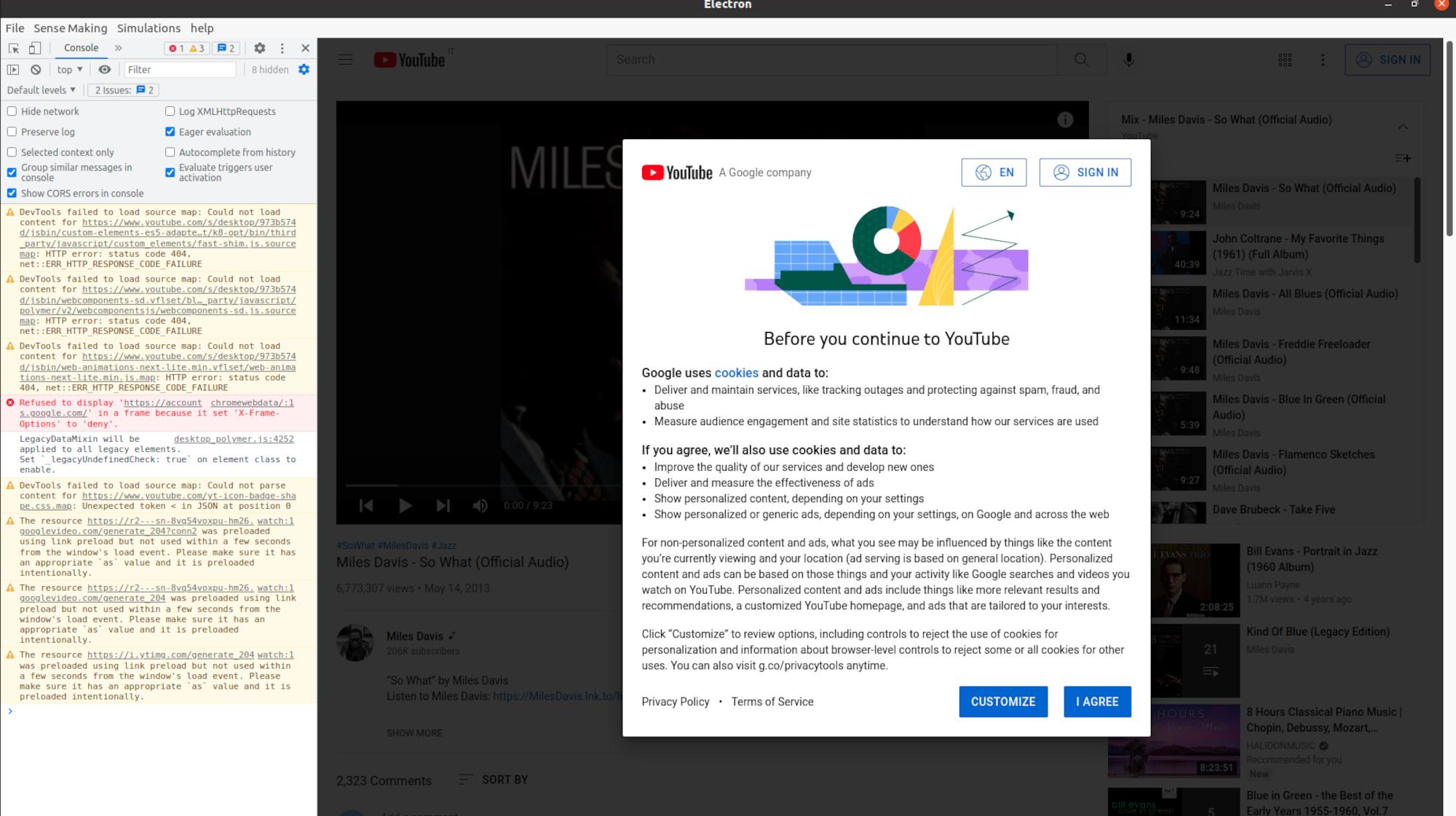I'm trying to figure out how to exchange messages between the main process and the BrowserView.
I've been using the ipc between the main process and the renderer process within a "simple" react renderer page.
But now, using the same technique, I do not see the received message in the console of the BrowserView, which, as far as I understand, seems to behave differently from a "normal" react renderer page.
And this SOF post seems confirm my hypothesis: Electron BrowserView Renderer process vs WebView
In preload I defined:
declare global {
interface Window {
api: {
electronIpcSend: (channel: string, ...arg: any) => void;
electronIpcOn: (channel: string, listener: (event: any, ...arg: any) => void) => void;
}
}
}
In main I have :
function createWindowTypeC (url_string: string) {
WindowTypeC = new BrowserWindow({
width: 800,
height: 600,
webPreferences: {
nodeIntegration: false,
contextIsolation: true,
nodeIntegrationInWorker: false,
sandbox: true,
nodeIntegrationInSubFrames: false,
webSecurity: true,
webviewTag: false,
preload: path.join(__dirname, "./preload/preload.js"), /* eng-disable PRELOAD_JS_CHECK */
}
})
// and load the index.html of the app.
// Emitted when the window is closed.
WindowTypeC.on('closed', () => {
WindowTypeC.removeBrowserView(view_C)
WindowTypeC = null
})
enforceInheritance(WindowTypeC.webContents)
// https://www.electronjs.org/docs/latest/api/browser-view
let view_C = new BrowserView()
view_C.webContents.once('did-finish-load', () => {
contents.focus()
view_C.webContents.send('ping', 'whoooooooooh!')
})
view_C.setAutoResize({
width: true,
height: true,
horizontal: true,
vertical: true
})
WindowTypeC.setBrowserView(view_C)
view_C.setBounds({ x: 0, y: 0, width: 800, height: 600 })
view_C.setBackgroundColor("#1e1e1e")
setTimeout(() => {
view_C.webContents.loadURL(url_string)
}, 200)
view_C.webContents.openDevTools({
mode: 'left'
})
}
While in the App_C.tsx I have:
import * as React from 'react';
function App_C(props) {
window.api.electronIpcOn('ping', (event, message) => {
console.log("App_C-window.api.electronIpcOn-ping-message: ", message)
})
window.api.electronIpcSend('pong', "Hello from App_C.tsx")
return (
<div id="outer-container" className='outer-container'>
<h1>App_C</h1>
</div>
);
}
export default App_C;
Executing the code, the page gets correctly rendered, but I do not see any message sent from the BrowserView to the renderer process.
Second, collateral, question, is: how to send a message on the way back, in the BrowserView sent by the renderer process?
And third question: how to interact with the page rendered by the BrowserView?

